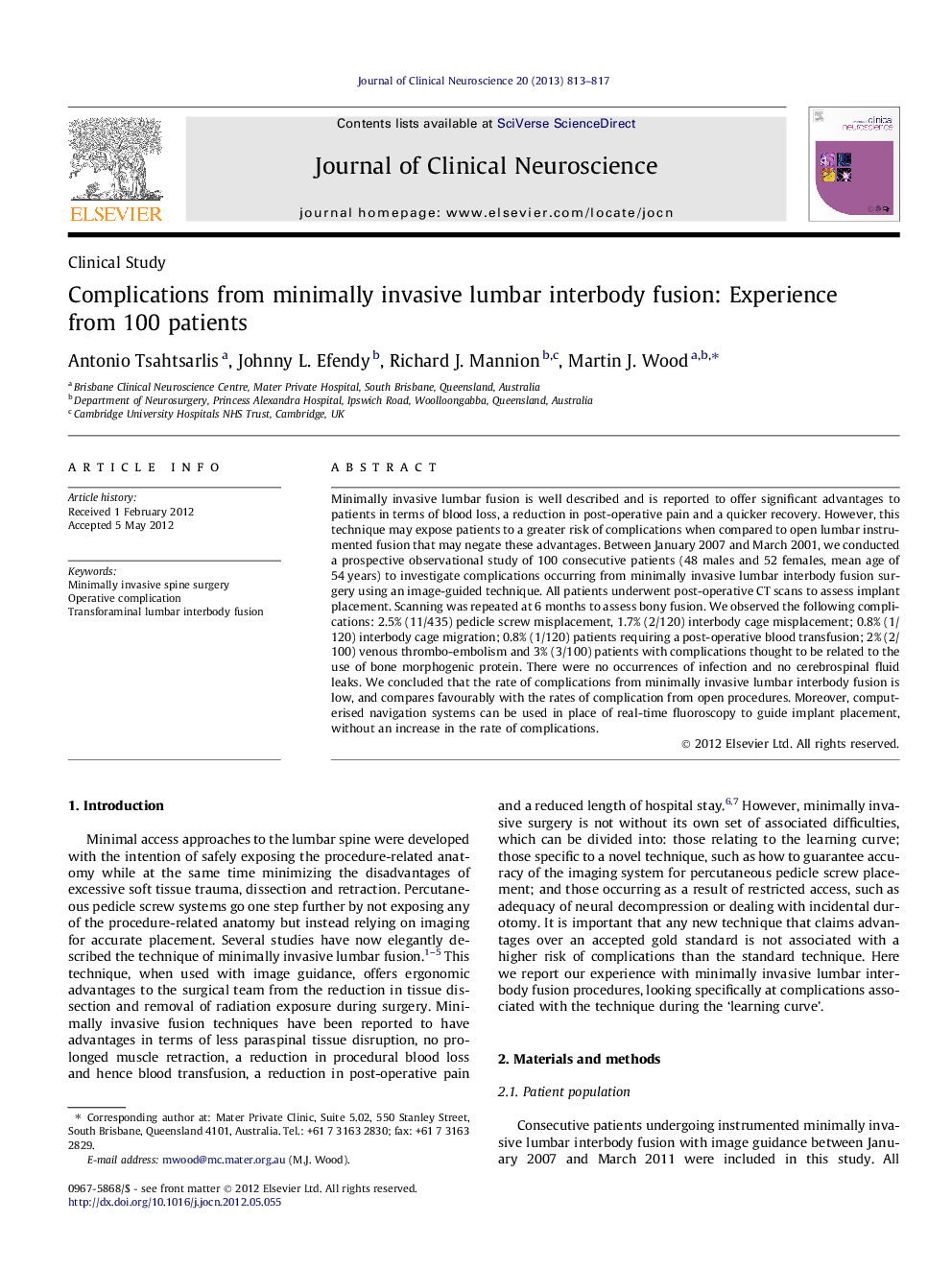| Article ID | Journal | Published Year | Pages | File Type |
|---|---|---|---|---|
| 3060007 | Journal of Clinical Neuroscience | 2013 | 5 Pages |
Minimally invasive lumbar fusion is well described and is reported to offer significant advantages to patients in terms of blood loss, a reduction in post-operative pain and a quicker recovery. However, this technique may expose patients to a greater risk of complications when compared to open lumbar instrumented fusion that may negate these advantages. Between January 2007 and March 2001, we conducted a prospective observational study of 100 consecutive patients (48 males and 52 females, mean age of 54 years) to investigate complications occurring from minimally invasive lumbar interbody fusion surgery using an image-guided technique. All patients underwent post-operative CT scans to assess implant placement. Scanning was repeated at 6 months to assess bony fusion. We observed the following complications: 2.5% (11/435) pedicle screw misplacement, 1.7% (2/120) interbody cage misplacement; 0.8% (1/120) interbody cage migration; 0.8% (1/120) patients requiring a post-operative blood transfusion; 2% (2/100) venous thrombo-embolism and 3% (3/100) patients with complications thought to be related to the use of bone morphogenic protein. There were no occurrences of infection and no cerebrospinal fluid leaks. We concluded that the rate of complications from minimally invasive lumbar interbody fusion is low, and compares favourably with the rates of complication from open procedures. Moreover, computerised navigation systems can be used in place of real-time fluoroscopy to guide implant placement, without an increase in the rate of complications.
